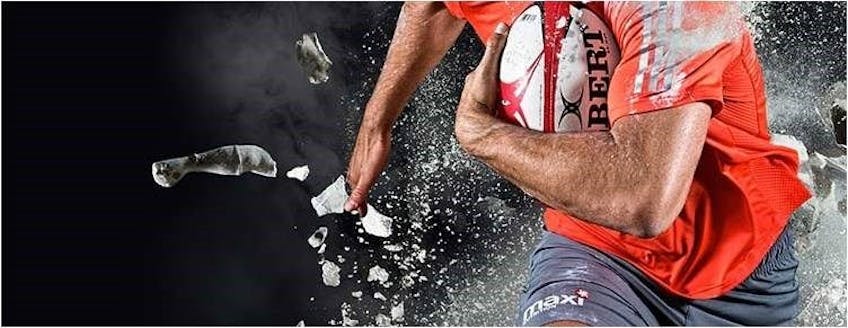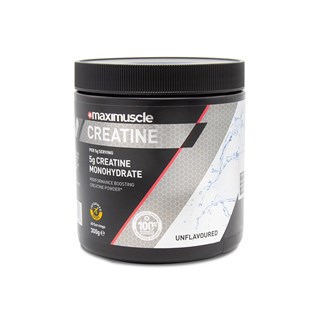To become an unstoppable force on the pitch, the modern rugby player needs to be able to combine sheer power and muscle mass with the ability to quickly change direction and accelerate at speed.
Unfortunately, many amateur players focus too heavily on emulating the size and bulk of professional players, often ignoring the importance of supplementing strength and power with mobility and agility.
Thankfully, we’ve created the perfect training plan for rugby so you can stop, start and change direction much more efficiently.
It is worth bearing in mind that agility exercises can sometimes be very stressful on your joints and soft tissue. So we would recommend doing this session only once a week with plenty of recovery exercises before and after.
Warm Up
- 10 x Bodyweight Squats
- 10 x Press-Ups
- 10 x Burpees
Dynamic Prone Plank
Muscles Worked: Core, Hamstrings, Lower Back, Chest, Shoulders, Traps and Triceps. Useful For: Reducing the risk of injury. Technique:- To begin, assume a press-up position, keeping your head, back and legs in a straight line.
- From here, pull your belly button towards your spine and lift your rear towards the ceiling to form a downward dog or pike yoga position.
- Reverse the movement and return to your starting position, but continue through the movement so that you lower your torso and legs towards the floor. Be sure to keep your elbows against your sides.
- Whilst your lower body is flat on the floor, use your arms to push your chest and head up towards the ceiling; this will help to stretch out the front of your body.
- Lower your chest back down and return back to plank position – that’s one rep.
- Perform 3 sets of 10 reps with 30 seconds rest in between each set.
Plyometric Drills
Box jumps
Muscles Worked: Quads, hamstrings and glutes. Useful For: Quick changes of direction. Technique:- Set up three boxes of appropriate height about a metre apart, and then stand with the first box 1-2 feet in front of you.
- Sit into a shallow squat and swing your arms behind you to get ready for the jump.
- Jump as high as possible by swinging your arms forward and up, whilst simultaneously extending through your hips and knees.
- Land softly on the box with your knees slightly bent to absorb the impact through your legs.
- Jump off the first box and onto the ground and up onto the next one and so on until you have jumped on and off all three boxes.
- Jog back to your starting position - that’s one rep.
- Perform 3 sets of 6 reps with 45 seconds rest in between each set.
Reverse Box Jump with 180 degree rotation
Muscles Worked: Quads, hamstrings and glutes. Useful For: Launching into tackles. Technique:- Begin by standing on top of a box of appropriate height.
- Jump off the box, making sure to land on both feet.
- As soon as your feet touch the floor, jump as high as you can in the air whilst simultaneously turning 180 degrees to land back on both feet – that’s one rep.
- Perform 3 sets of 10 with 1 minute rest between each set – be sure to alternate direction of turn with each rep.
Clock Jumps
Muscles Worked: Quads, hamstrings and glutes. Useful For: Bamboozling the opposition with your footwork. Technique:- Imagine the image of a clock face on the floor in front of you, roughly 2 feet in diameter.
- From here, stand with your feet together in the centre of the imaginary clock and your arms relaxed by your side.
- To begin, jump forwards to where 12 would be on the clock and then back to the centre, keeping your feet together and knees slightly bent at all times.
- Work your way around the hours on the imaginary clock face as quickly as you can, jumping back to the centre each time and always facing forwards.
- Once you get back to 12, sprint 5 yards in front of you and then jog back to the start – that’s one set.
- Perform 4 sets with 1 minute rest between each – be sure to alternate between clockwise and anti-clockwise jumps for each set.
Centipede Ladder Drill
Muscles Worked: Hips and Abductors. Useful For: Improved balance and explosiveness. Technique:- To begin, you will need an agility ladder – it is always best to begin slowly to familiarise yourself with the movements and then gradually increase speed.
- The centipede ladder drill moves along the side of the ladder and you must touch in each of the boxes with both feet.
- Starting from the left hand side of the ladder, the pattern is as follows:
- Repeat this pattern until you get to the other end of the ladder.
- Repeat the same process from right to left – that’s one rep.
- Perform 3 sets of 4 reps with 1 minute rest in between each set.

















